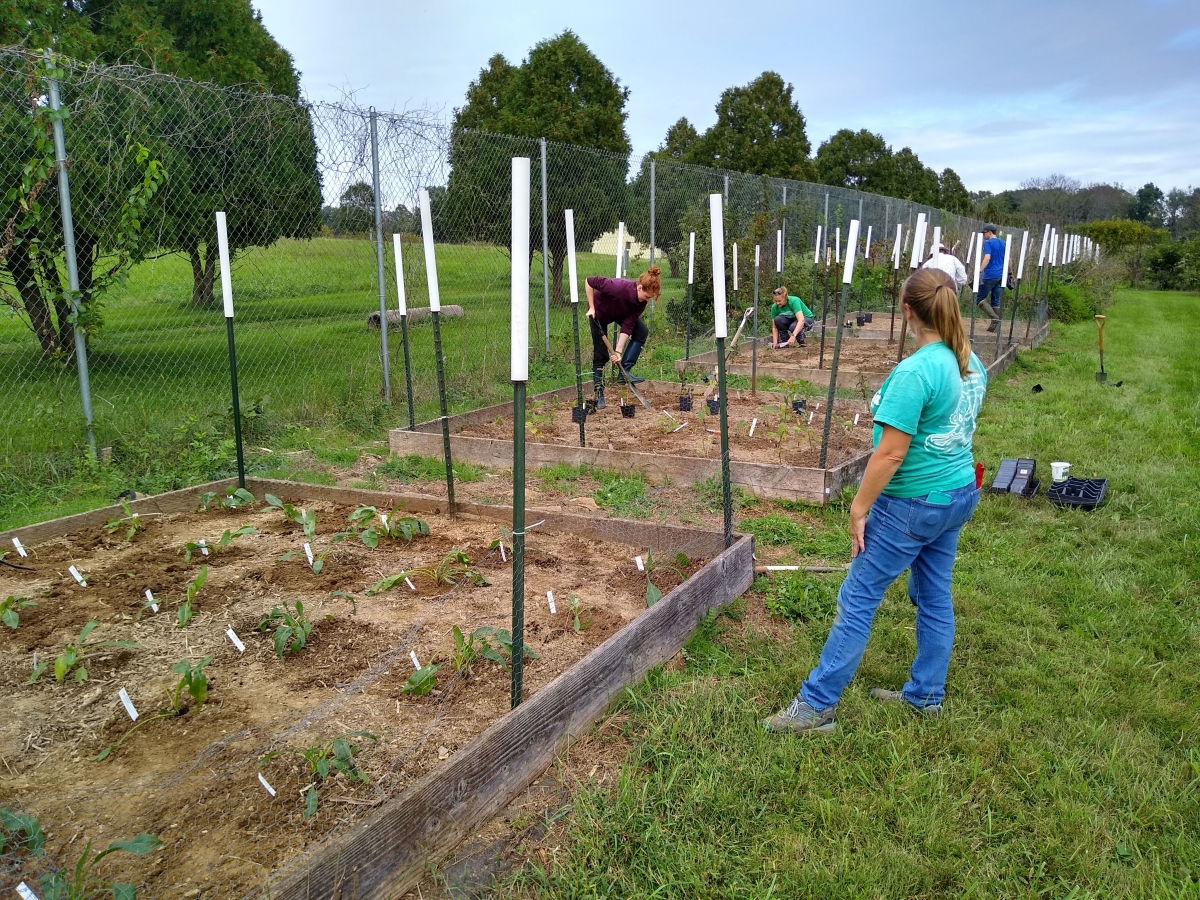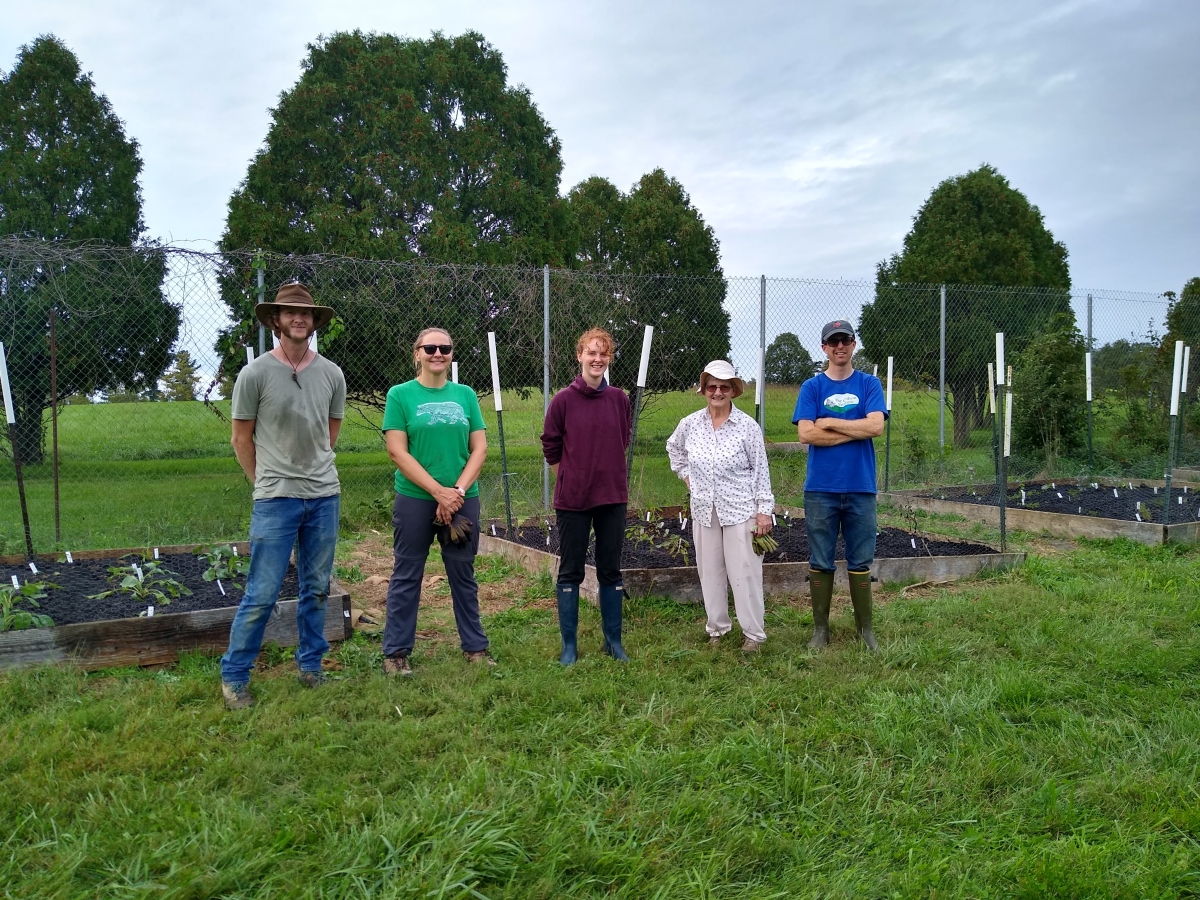 by Jack Monsted, Assistant Curator, Native Plant Trail
by Jack Monsted, Assistant Curator, Native Plant Trail
"The goal of these plantings is to produce enough seed to distribute to interested local landowners through sales and seed swaps."
When most people think of endangered species conservation, a few well-publicized species spring to mind: giant pandas, tigers, African lions, polar bears, and spotted owls. These large, charismatic animals on the brink of extinction are easy to recognize, easier to love, and receive the lion’s share (no pun intended) of the attention and funding for conservation. But one endangered species that almost no one knows about is Torrey’s mountain mint. Even as a botanist, I’ll admit that the first time I heard about this plant my reaction was mostly confusion: Who is this Torrey person, and will their mint be tasty in a mojito?
And yet, this elegant little plant with narrow leaves, a square stem, and small clusters of purplish-white flowers is in trouble. Native to Virginia and surrounding states, the once relatively common plant now has fewer than 20 known wild populations throughout the world and is listed as a globally ‘imperiled’ species under Nature Serve’s species conservation ranking system, a more severe conservation ranking than even the polar bear’s “vulnerable.”
Knowing this, a straightforward question presents itself to conservation-oriented institutions like Blandy Experimental Farm and the Clifton Institute: How do we save Torrey’s mountain mint and other plants like it? The open, wild grassland ecosystems in which the plant thrives are disappearing throughout the Eastern US, replaced by farms and an ever-expanding patchwork of housing developments. Simply setting aside large preservations of land where the plant still exists might not do the trick either – rare plants with small populations can rapidly disappear if invasive plants are introduced into their habitat or extreme weather events occur too frequently.

Some potentially suitable landscape types that are not diminishing, however, are human engineered ones – gardens, meadows, and woodlands intentionally grown on private property. Many people are starting to recognize the aesthetic and environmental value of native plants in landscaping – and in doing so becoming backyard conservationists themselves. The only trouble here is one of availability – where do conservation-minded landowners acquire these unique plants that are hard to find but would benefit the most from increased planting?
Most native seed suppliers carry only the most common and showy native wildflowers, which is just a small subsection of our incredibly diverse flora. Furthermore, most commercially available plants are sourced from only a few areas and shipped to other parts of the country – a framework that doesn’t preserve local varieties of plants and often produces an inferior product for customers (a milkweed adapted to Minnesota weather might not do well in the warmer climates of Virginia).
This is where Blandy a nd the Clifton Institute come in. One of the State Arboretum’s core missions is to preserve biodiversity, but opportunities to extend that mission beyond our property lines are few and far between. So when the Clifton Institute asked if we’d like to start a plot to produce seeds of rare and locally unavailable plants like Torrey’s mountain mint, we jumped at the opportunity. For the past few years, the Clifton Institute has been growing seedlings of many fascinating native plants that can’t be purchased locally, and this October we filled several research beds with many of them, including stiff goldenrod (Solidago rigida), upland ironweed (Vernonia glauca), pasture thistle (Cirsium pumilum), late blue aster (Symphyotrichum patens), and of course Torrey’s mountain mint (Pycnanthemum torreyi). Our Native Plant Trail volunteer crew was essential in preparing and planting the beds and will continue to look after them as they mature and start to flower.
nd the Clifton Institute come in. One of the State Arboretum’s core missions is to preserve biodiversity, but opportunities to extend that mission beyond our property lines are few and far between. So when the Clifton Institute asked if we’d like to start a plot to produce seeds of rare and locally unavailable plants like Torrey’s mountain mint, we jumped at the opportunity. For the past few years, the Clifton Institute has been growing seedlings of many fascinating native plants that can’t be purchased locally, and this October we filled several research beds with many of them, including stiff goldenrod (Solidago rigida), upland ironweed (Vernonia glauca), pasture thistle (Cirsium pumilum), late blue aster (Symphyotrichum patens), and of course Torrey’s mountain mint (Pycnanthemum torreyi). Our Native Plant Trail volunteer crew was essential in preparing and planting the beds and will continue to look after them as they mature and start to flower.
The goal of these plantings is to produce enough seed to distribute to interested local landowners through sales and seed swaps. The plants will need at least a year or two before any significant amount of seed is produced, but stay tuned: Maybe you’ll be able to add the beautiful white flowers of Torrey’s mountain mint to your garden – and help save an endangered species in the process.
